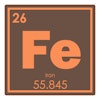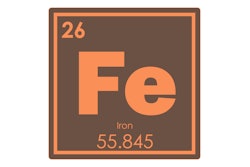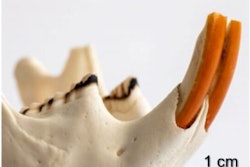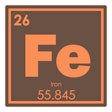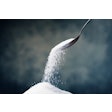Iron supplements may lead to tooth discoloration, affecting patients’ self-confidence and social experiences, but some may be worse than others, according to a study recently published in BMC Oral Health.
Specifically, polysaccharide and liposomal iron supplements may result in less tooth discoloration, the authors wrote.
“This provides robust evidence that the formulation of an iron supplement is a critical determinant of its staining potential and reinforces the recommendation to consider encapsulated forms like liposomal or polysaccharide iron to minimize this undesirable side effect,” wrote the authors, led by Parisa Vahedi of the Alborz University of Medical Sciences in Iran (BMC Oral Health, September 24, 2025, Vol. 25, 1428).
The study sought to investigate color changes in primary teeth after exposure to four iron supplement types. The issue holds clinical importance in pediatric dentistry, as tooth discoloration can affect parental acceptance of treatment and children’s willingness to cooperate.
Researchers examined 65 intact anterior primary teeth. The baseline color values (L, a, b) of each tooth were measured with a spectrophotometer. Teeth were divided into a control group, treated with saline, and experimental groups were exposed to different iron supplements, both encapsulated (liposomal, sucrosomial) and nonencapsulated (ferrous sulfate, iron polysaccharide complex), they wrote.
The supplements tested included Liposofer (liposomal), Amivital Ferrous Sulphate (ferrous sulfate), SiderAl (sucrosomial), and Feramax (iron polysaccharide complex), with teeth immersed in these solutions for two weeks. Color difference (∆E) was then evaluated using the CIELab system, which measures color within a three-dimensional space.
The mean ∆E value was significantly higher in the Amivital Ferrous Sulphate and SiderAl groups compared to the others (p < 0.05). For Amivital Ferrous Sulphate, the L parameter decreased significantly after two weeks (p < 0.001), while both a and b parameters increased (p = 0.002 and p < 0.001, respectively), they wrote.
In the SiderAl group, the L and b parameters decreased significantly (p < 0.001 and p = 0.008), but the a parameter showed no significant change (p = 0.716). With Feramax, the L parameter decreased (p = 0.003) and the a parameter increased (p = 0.024), while the b parameter did not change significantly (p = 0.232). Overall, Liposofer and Feramax had the lowest mean ∆E values among the supplements tested (p < 0.05).
Nevertheless, the study had limitations. It did not mimic real oral conditions such as saliva flow, biofilm development, or pH changes that influence tooth discoloration, the authors added.
“These findings suggest that polysaccharide and liposomal iron supplements may cause less discoloration in vitro, though further clinical research is needed to confirm these findings,” Vahedi and colleagues concluded.




